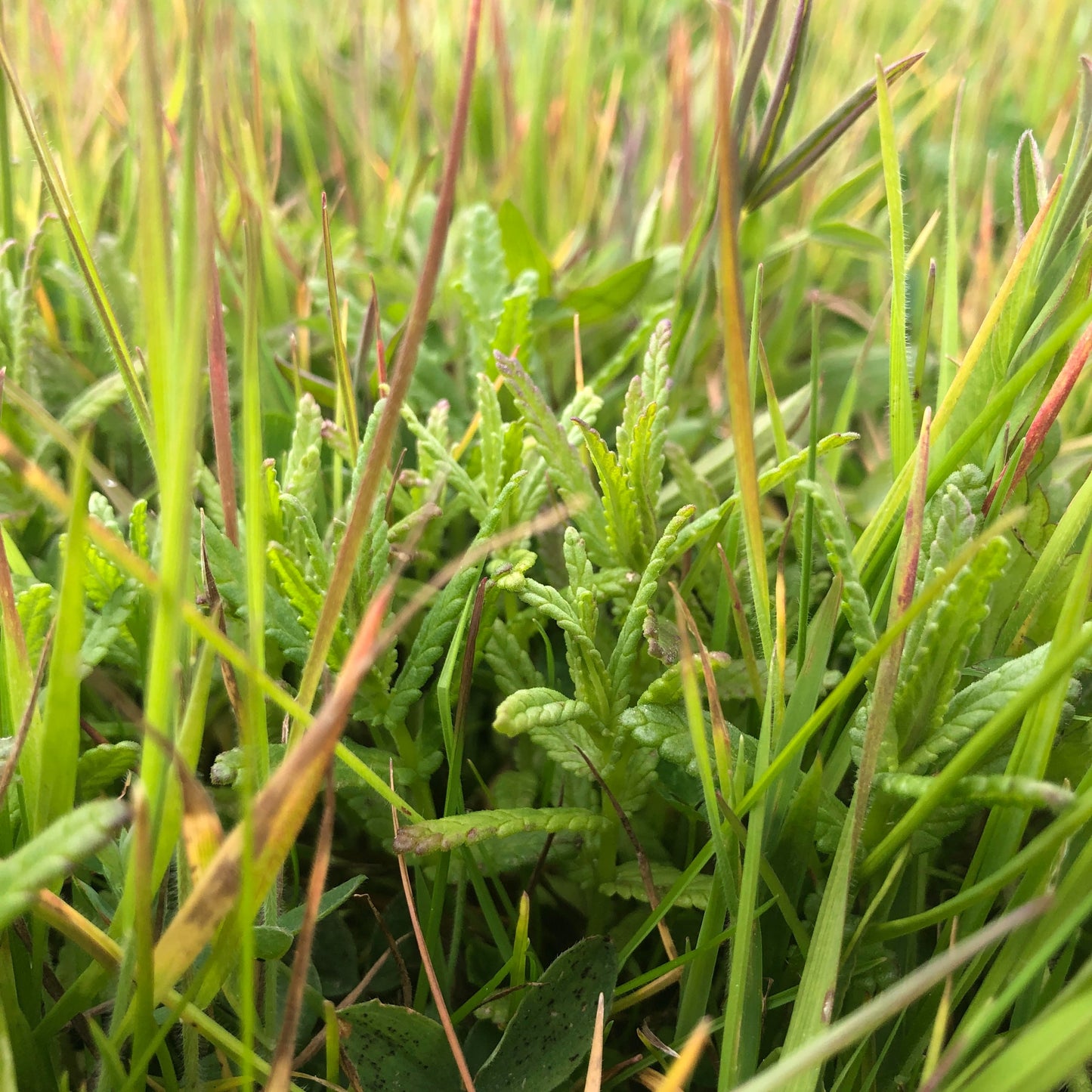Habitat Aid Ltd
Yellow Rattle (Rhinanthus minor) Seed
Yellow Rattle (Rhinanthus minor) Seed
Prices include VAT (when applicable) and delivery to mainland UK.
Couldn't load pickup availability
Please visit our sister site British Wildflower Meadow Seeds if you want less seed than advertised here or if your intended purchases come to under our £100 basket minimum.
Yellow Rattle (Rhinanthus minor) Seed
Yellow rattle (Rhinanthus minor) is an attractive, partly parasitic ("hemi-parasitic"), annual wildflower of short grasslands. "Partly", because it photosynthesises. It's part of the Figwort family, and used to be widespread across the UK on mostly neutral soils. Although it's still found across the country, including in the Machair, it's now much less common. It's appearance is variable; we think there are at least 6 sub-species of it in the UK.
Once Yellow rattle is established it can reduce the vigour of many grasses by up to 50%, thus benefiting other sown wildflowers - check out our blog on how to grow and manage it. Once it dies back, each Rhinanthus plant leaves a space for wildflowers to fill too. It does need full sun, however, and even Yellow rattle will be shaded out by more vigorous grasses on fertile soil - it's not the key to all a meadow maker's problems. Having said that, it can work brilliantly in helping to bring wildflowers back into old pasture, although of course it doesn't of itself reduce soil fertility. Yellow rattle also has other unexpected results. For example, ribwort plantain has learnt to retreat away from it, so does tremendously well in swards with a lot of Rhinanthus in as it fills in the space it leaves behind. Clever things, plants.
Rhinanthus is a helpful plant for pollinators too, particularly bumblebees and butterflies, although honeybees find its slightly complicated flowers difficult to access..
Rarity
For obvious reasons farmers were never terribly keen on Yellow rattle, although it's apparently tasty for livestock. That said, as it is an annual it's easy to mow out before it sets seed (when it rattles) in July. This was traditionally time to cut the hay; hence its synonym, "Hay Rattle". Its seed has notoriously short viability - you must sow from this season's harvest. It will also disappear in thick, unmanaged sward. The seeds are small and the plants unable to compete with surrounding vegetation early on. Nowadays, silage cuts over the summer stop it from seeding at all. Needless to say, it's much less common than it used to be a hundred years ago.
Appearance
Yellow rattle seeds are light flat discs, designed to be wind blown. They germinate from January and the seedlings become evident in early March, so that they steal a march on the surrounding grasses. Be careful not to mow them out! Once they've got going they are easy to spot, however. The leaves have serrated edges, a bit like a nettle, and in seedlings look rather stiff. The flowers look a little like yellow snapdragons (or little cockscombs, apparently). They're very pretty. The plants grow to around 50cm tops.
Buying
Yellow rattle seed must be sown from summer to the year end, as it needs to be chilled to trigger its germination the following spring. We recommend adding the seed to a newly established meadow after its first season. As it doesn't last the seeds need to be as fresh as possible. It also reacts badly to being badly handled - it's tricky to process properly. You need to be careful where you source it from. Our Rhinanthus seed is freshly harvested from meadows in various locations around England. We have it tested once it has been harvested and cleaned to check on the seeds' viability, and require viability over 90%.
Sowing Seed
The time to seed Yellow rattle is between harvest and the end of December. Like some other wildflower species, it needs to get cold to trigger germination - "vernalization". Sow by hand onto existing sward, at a rate of up to 1g per square metre. It's expensive stuff, so you might want to use a lower rate or just seed some areas and wait for it to spread. It's really important that the existing grass is cut VERY short before seeding and, if necessary, chain harrowed or scarified to get rid of any thatch. Ideally you should see 50% earth. The seeding rate is very low, so you might want to add sand or similar to bulk it out. Once sown, either walk or lightly roll in, or use livestock to tread in the seed and make sure it's in good contact with the earth.
Management
Yellow rattle is a plant of short grassland - if the grasses surrounding it are allowed to grow long and rank it won't be able to compete. Once you've taken a hay cut, typically from July to late August, it's important to keep the grass lightly grazed or cut (removing cuttings) over the winter. Stop cutting in March, or you'll chop the heads off the young seedlings!
Our Seed For Sale
We sell Yellow Rattle seed from 500g, and sell smaller quantities at our sister website: BritishWildflowerMeadowSeeds.co.uk.
The Rhinanthus minor seed we sell is freshly harvested and processed to avoid damage and low germination. We also test it and require at least 90% viability from our harvesters. In 2025 we are selling seed from sites in Somerset and Dorset, Shropshire and the Midlands. These sites are generally calcareous or neutral grassland.
We typically deliver from August to December.
We strongly recommend reading up on meadows before buying Yellow Rattle seed. Although our Rhinanthus seed has high germination rates, you need to be careful about initial care and establishing an annual regime. Don't be put off though - once you get the hang of it it's pretty straightforward, so long as you follow instructions!
Information
Share





















